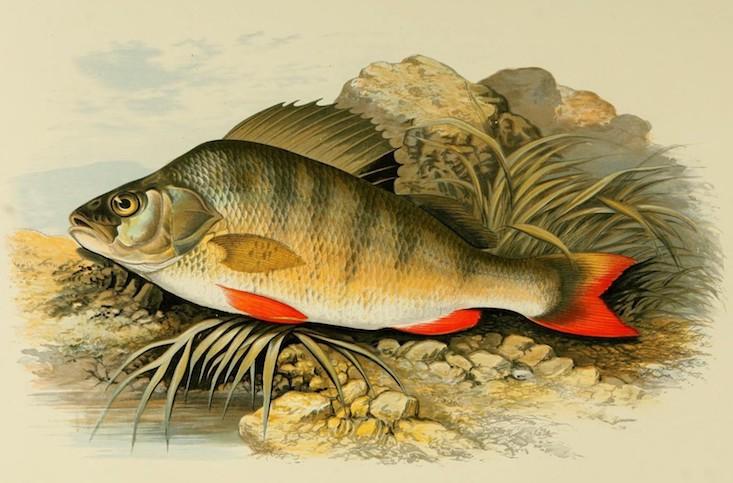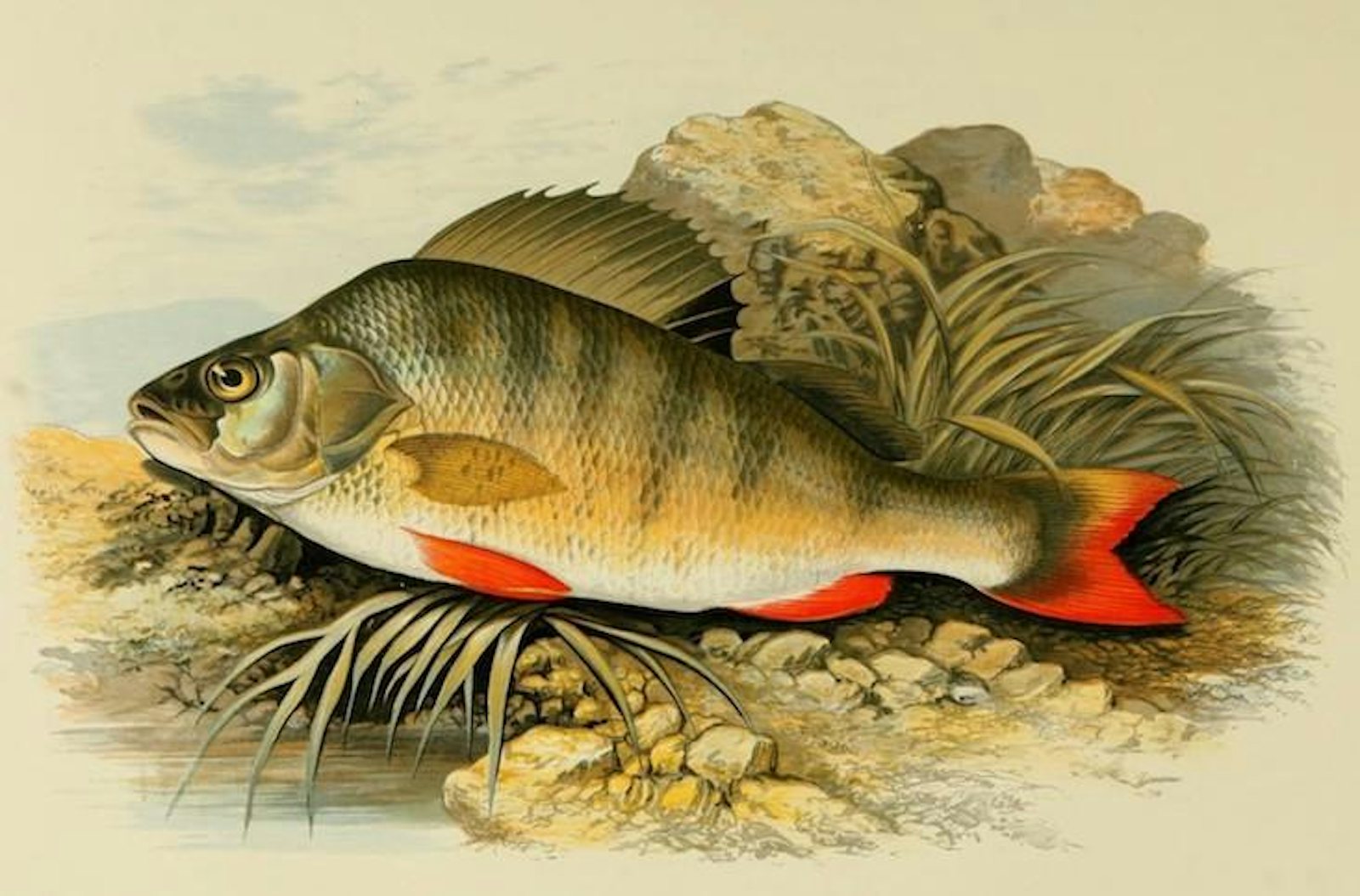Plastic is so pervasive that I sometimes forget it’s all around me—in toothpaste, in makeup, in clothes. But plastic is also omnipresent in places untouched by people, and one sobering forecast shook me: By 2050, it’s likely that plastic in the oceans will outweigh all the oceans’ fish. Some reports predict 850-950 million tons of plastic (the equivalent in weight of 4.5 million blue whales). Given all the plastic we’ve put into the oceans over decades—the present rate is 4 to 12 million tons of plastic per year—you might think some species will have adapted somehow, perhaps taking a liking to the synthetic polymers.

Well, Swedish researchers recently found that European perch larvae devour the stuff. “Naïve larvae that come across these plastic particles believe that it’s a resource that they need to ingest large amounts of, almost like teens only eating unhealthy fast foods,” says Oona Lönnstedt, a marine biologist at Uppsala University. “This is of great concern as larvae don’t get any energy to grow if they only ingest plastic.”
The European perch, a yellow-greyish fish with dark stripes and bright orange fins, is native to Eurasia. Earlier this year, Lönnstedt and her colleagues collected fertilized egg strands of perches from the Baltic Sea and placed them into three different one-liter glass aquariums. One had no plastic, the second had a medium concentration of 10,000 microplastic particles (about the size of a fine grain of sand) per cubic meter, and the third one had 80,000 particles per cubic meter—still well below the highest concentrations of plastic in spots along the Swedish coast.
After three weeks, the perches hatched and the first significant differences started to show: The fish with no exposure to plastic spawned at a 96 percent success-rate, just 7 percent more than the 10,000-particle concentration and only 15 percent more than the 80,000-particle concentration. What’s more, the researchers found that the fish in high plastic concentrations “preferred” eating the microplastics over their regular food, brine shrimp. The chemical makeup of the plastic, polystyrene, may be what appeals to them; or it could be the way it looks, like small, white-beige, transparent balls.
The plastic fragments already end up on human dinner tables with quite some regularity.
The plastic-eating fish were smaller, slower, and behaviorally impaired. Olfactory threat responses to changes in habitat composition and ocean chemistry help the fish to “smell” danger when it gets too close, but the 10-day-old perches born in plastic-drenched water seemed less wary of threats, fled a shorter distance away, and were more likely to just stall, turning them into an easy snack for predators, like the juvenile pike in the lab. Indeed, they were eaten “more than four times quicker than control fish,” says Lönnstedt.
In a 2009 study, Joseph Thompson, a biologist at Franklin & Marshall College, in Pennsylvania, and his then-graduate student Erin Grant, found a similar preference in sea cucumbers. Sea cucumbers are wobbly creatures that look like an obese version of its namesake, come-to-life. Some have thick orange tentacles all over their snail-like bodies; others have leathery skin and a snazzy leopard-like print. Many of them, including Thompson’s specimen, observe a relatively non-selective feeding pattern: They just shovel sediment, such as sand grains, into their mouth to absorb biofilm.
Thompson and Grant wanted to see how much plastic particles sea cucumbers ate. They were astonished: The ratio of plastic to sand in their fecal matter was up to 25 times higher than the plastic concentration in the sand, indicating that the sea cucumbers preferred consuming plastic. Thompson thinks that the microplastic’s surface, being smooth, non-sticky, and easy to grab, may be what appeals to them. Or maybe there was a difference in the biofilm composition, he says, that makes the plastic particles seem tastier. Since the sea cucumbers digest the biofilm of the particles rather than the particles themselves, it’s not yet clear whether the plastic harms them.
Meager and feeble offspring, as indicated by the perch study, is troubling news for world fisheries. “Our fisheries are already getting hammered by overfishing,” says Thompson. “We have this idea that if we prevent overfishing, stocks can return. But there’s a chance that that might not be enough.” Rising amounts of plastic, Lönnstedt agrees, may curb the replenishment of fish stocks.
The plastic fragments already end up on human dinner tables with quite some regularity. Small planktivorous prey fish eat the plastic and are then eaten by larger predatory fish, allowing for a bioaccumulation of microplastic in certain animals. About one quarter of fish sampled in markets in California and Indonesia, for example, had plastic particles in their digestive system.
“Its very easy as an individual to feel that there is nothing you can do to help make a difference,” says Thompson. “But here you can make a difference as an individual, as a consumer. A lot of these microplastics—some of them anyway—are tiny beads in cosmetics, like facial scrubs and stuff. We can look at the ingredients and we can choose not to use the ones that have plastic.”
Joelle Dahm is an editorial intern at Nautilus. Follow her on Twitter @JDayum.


























